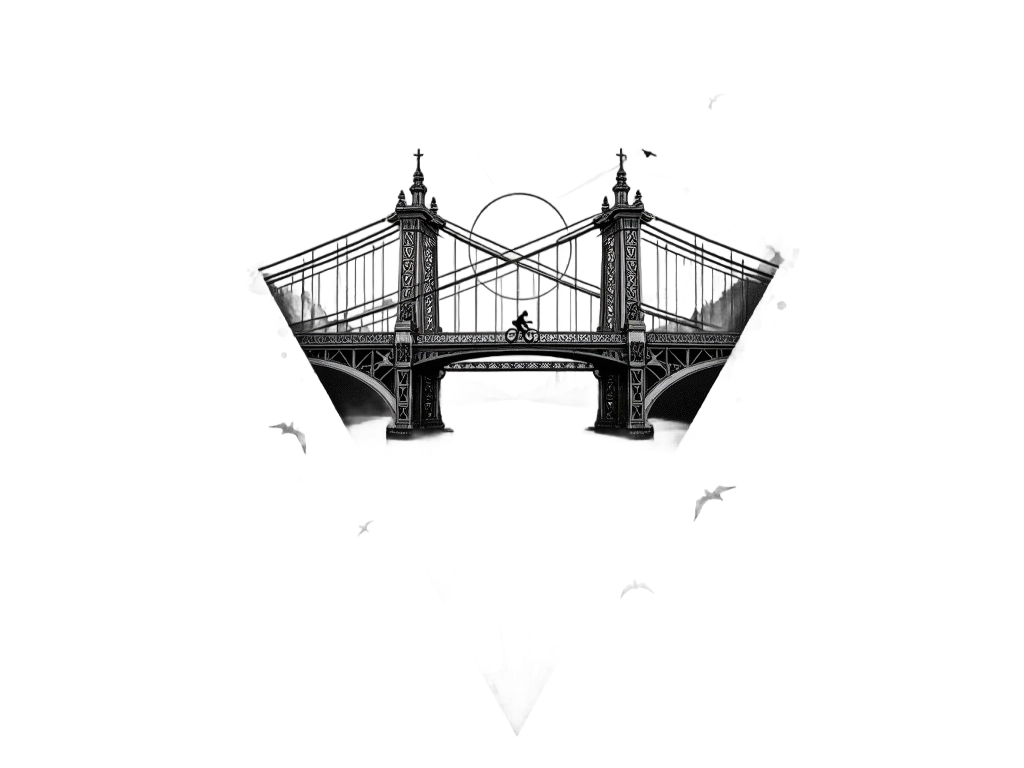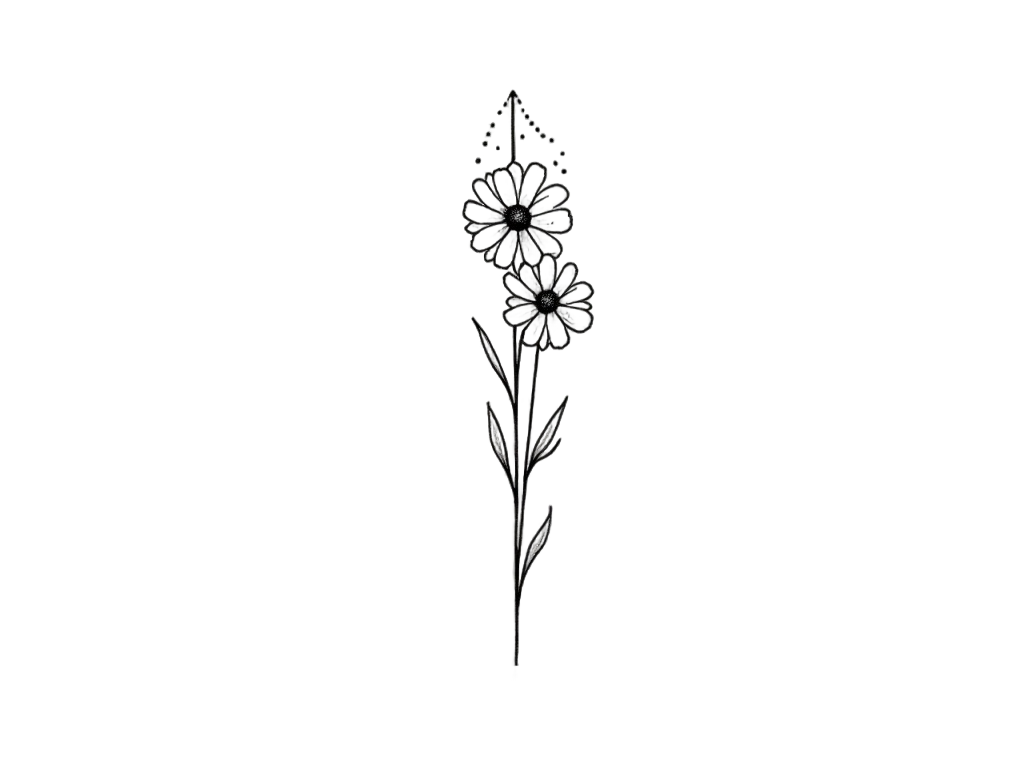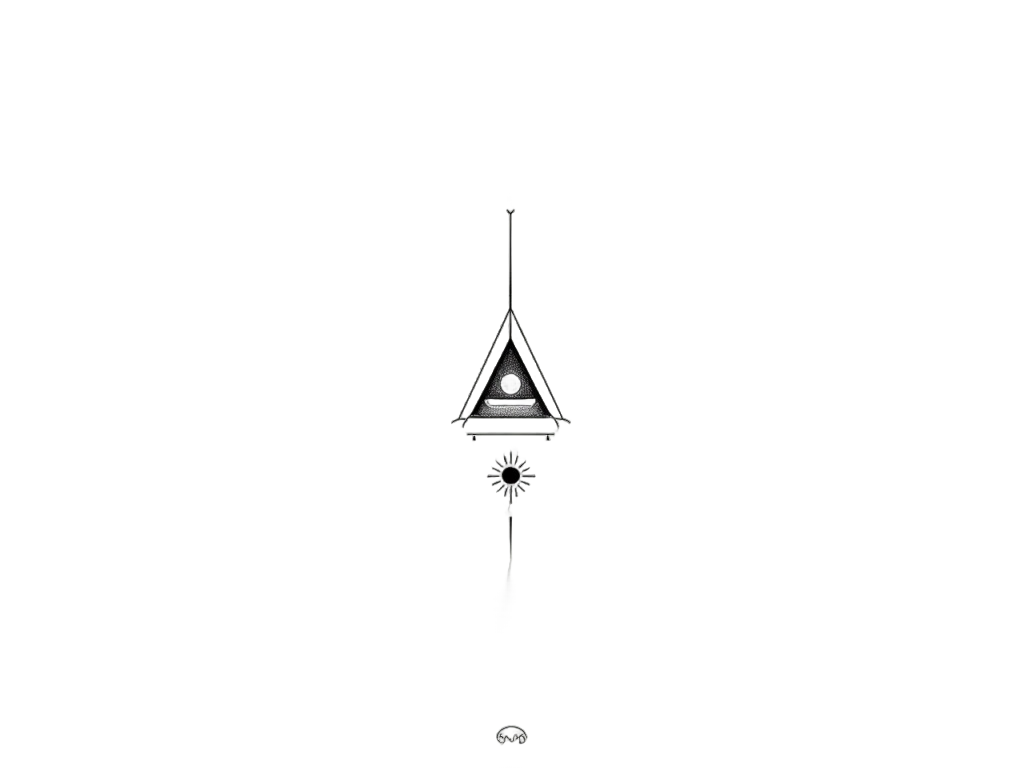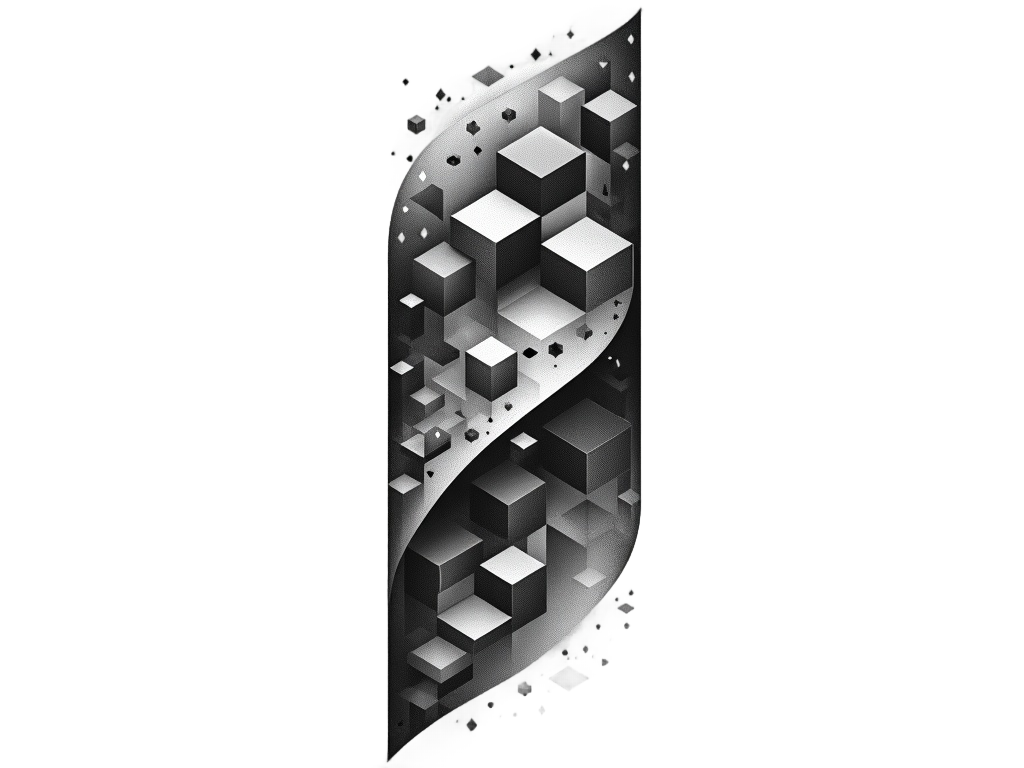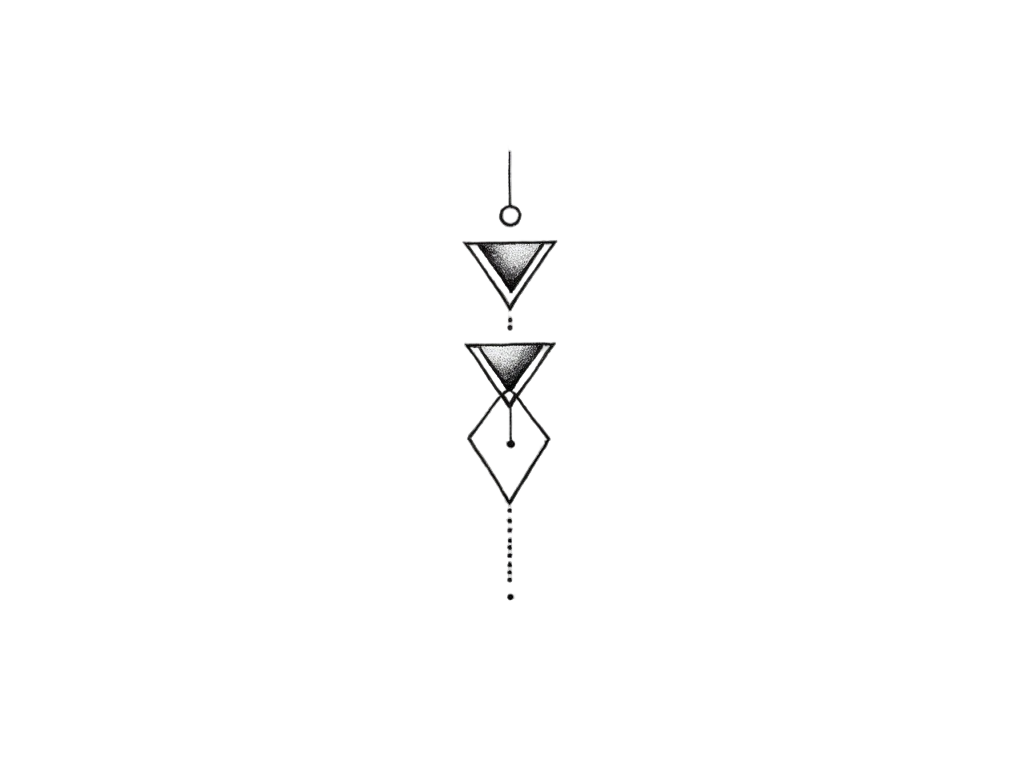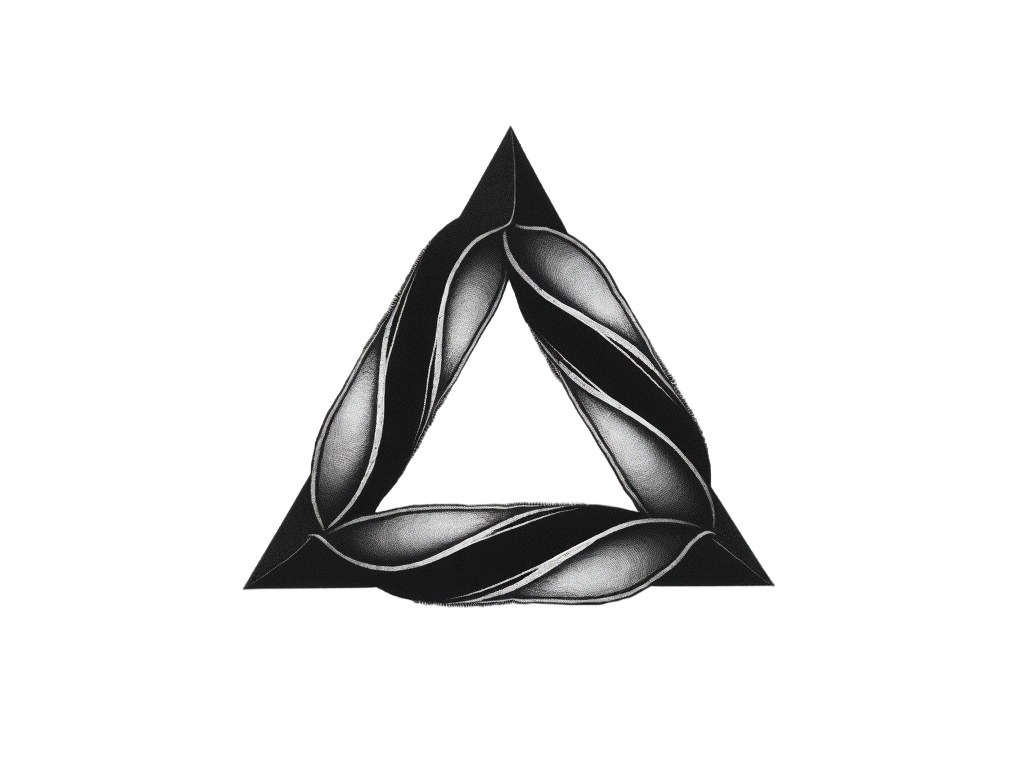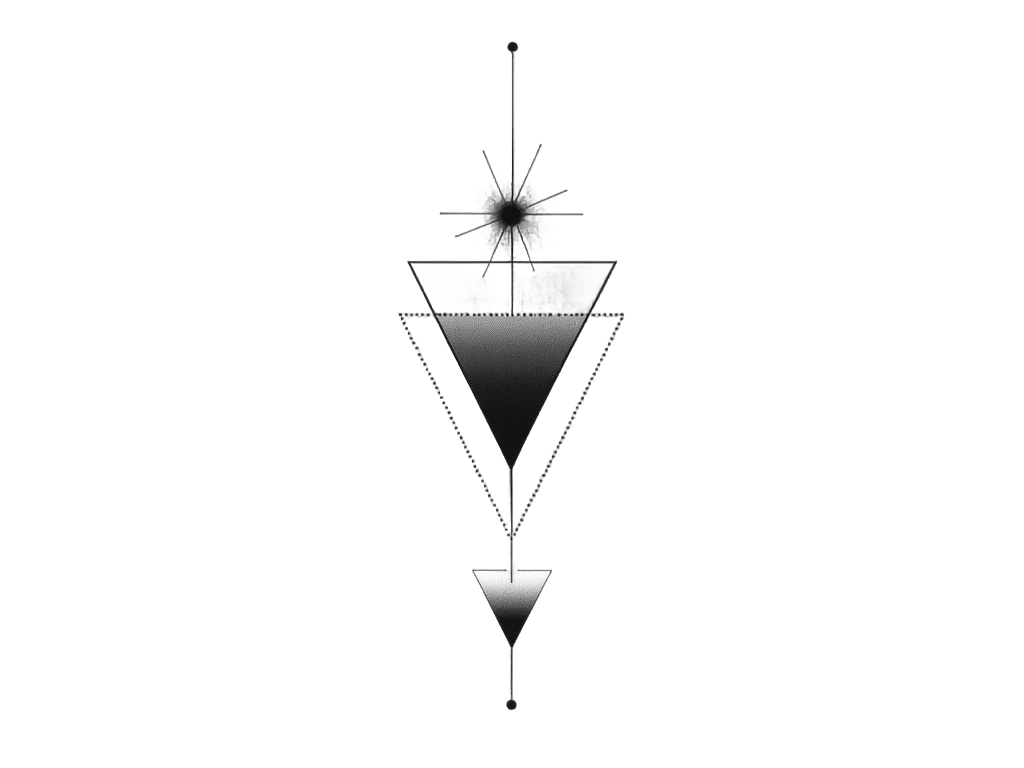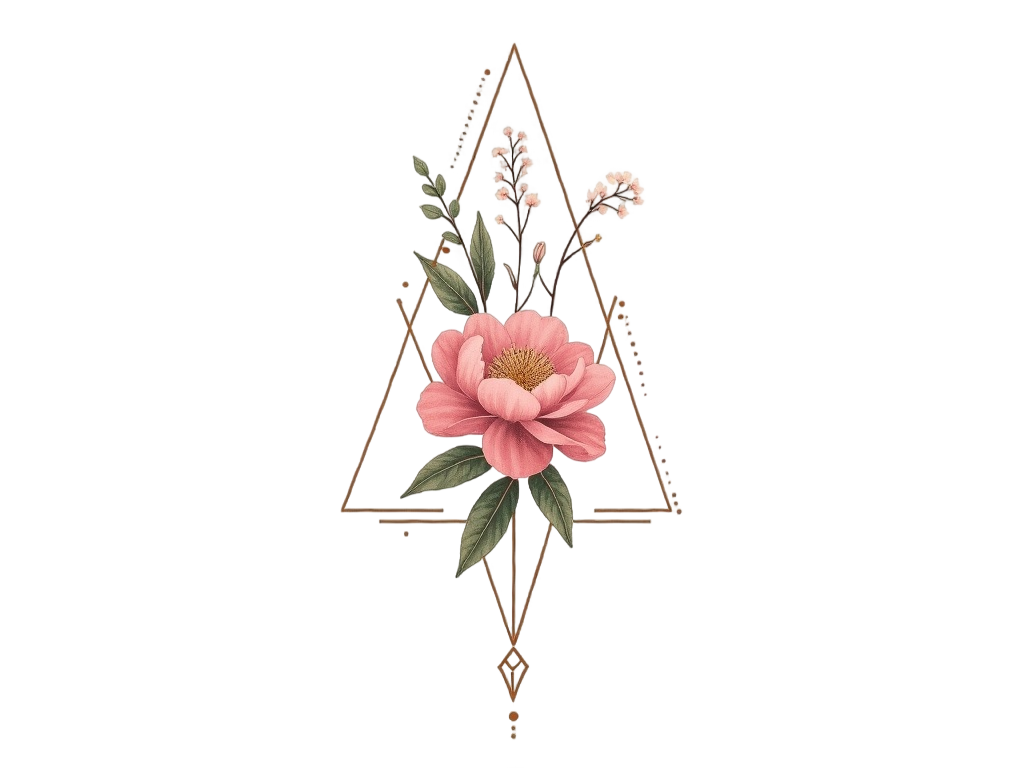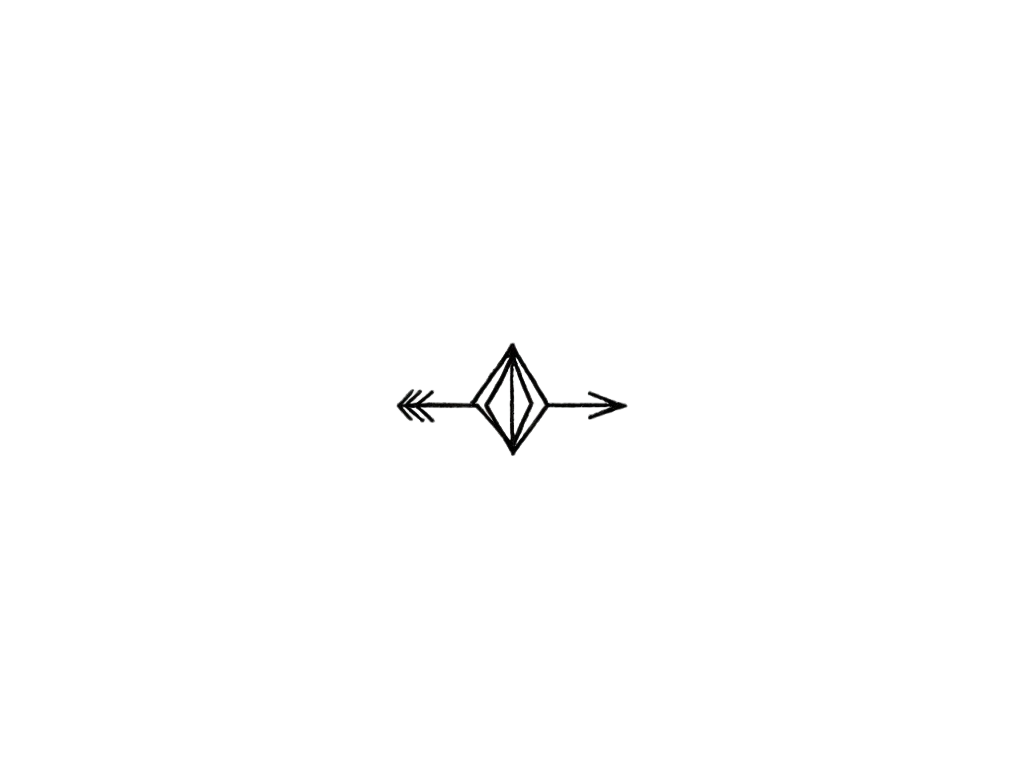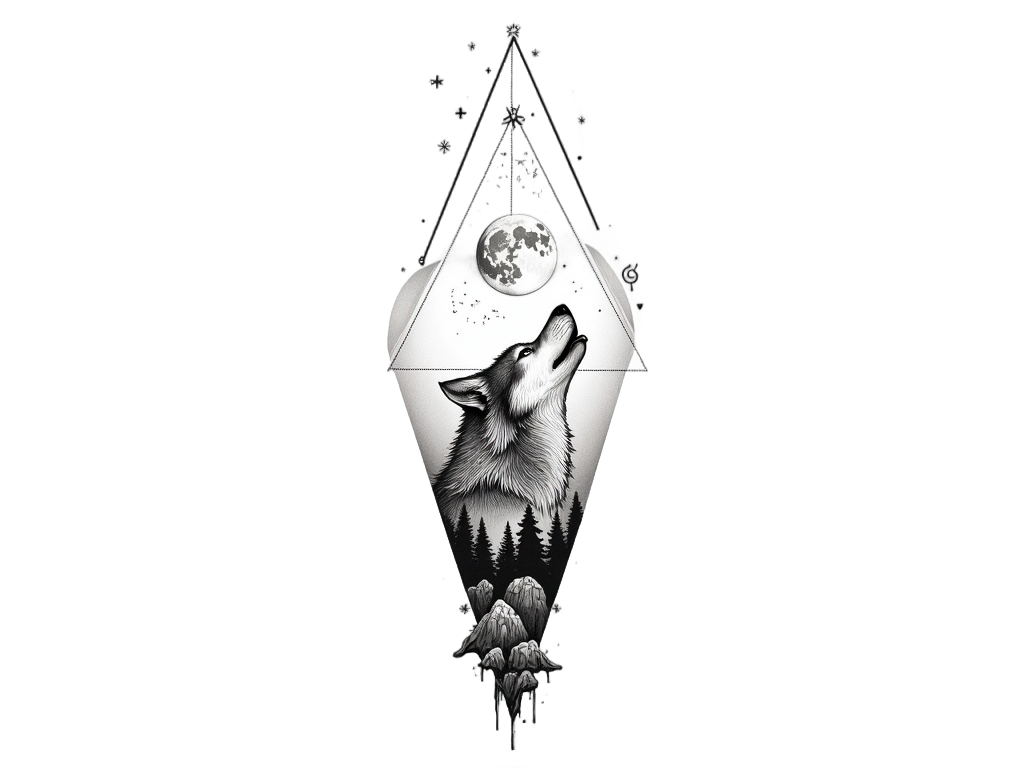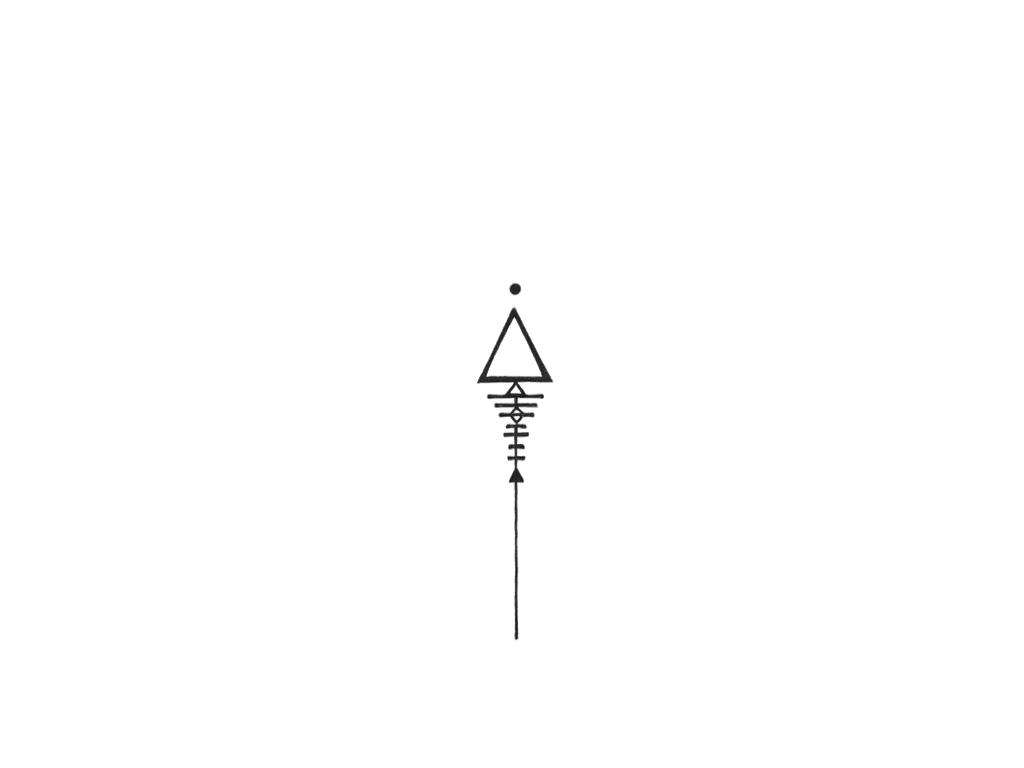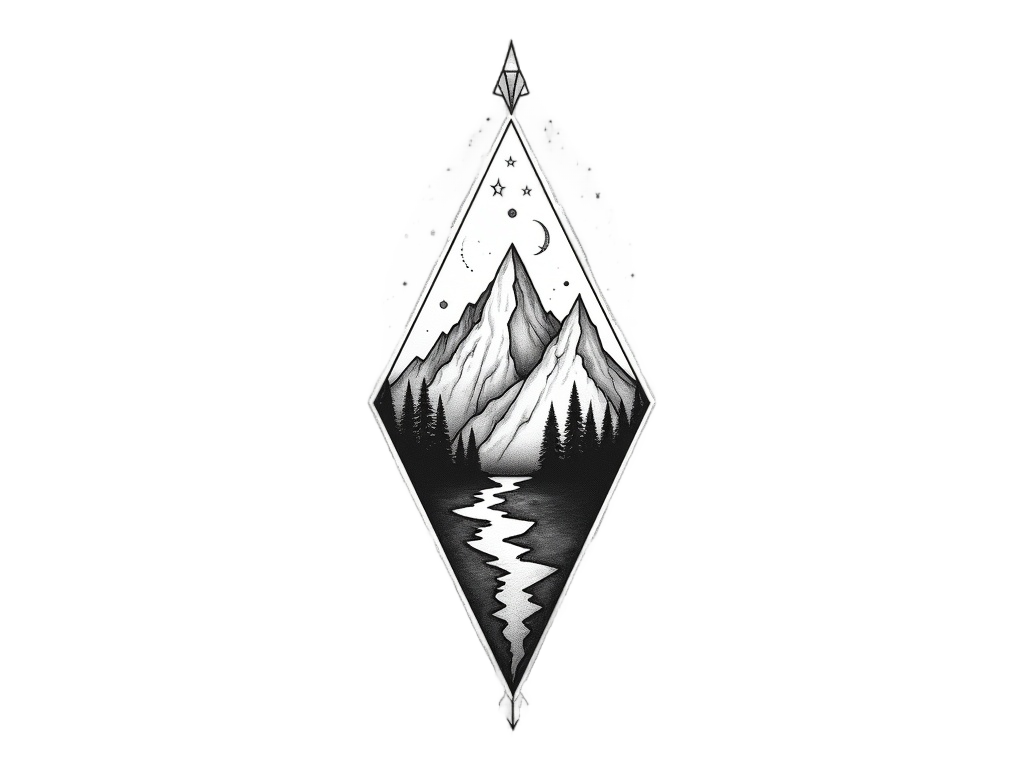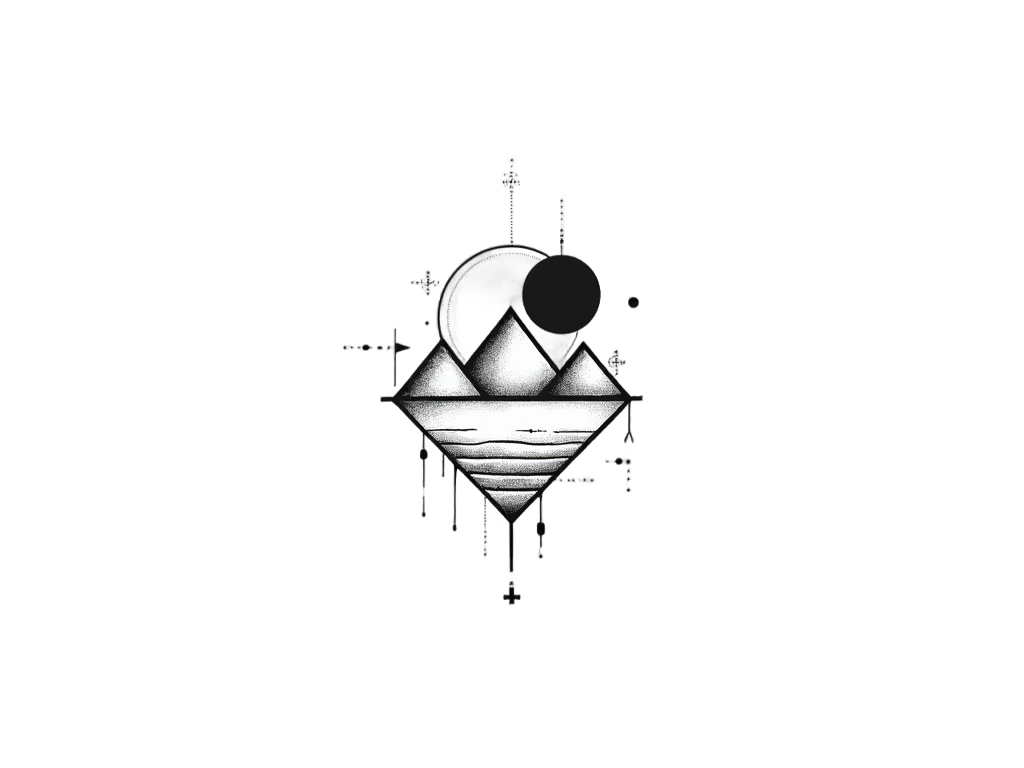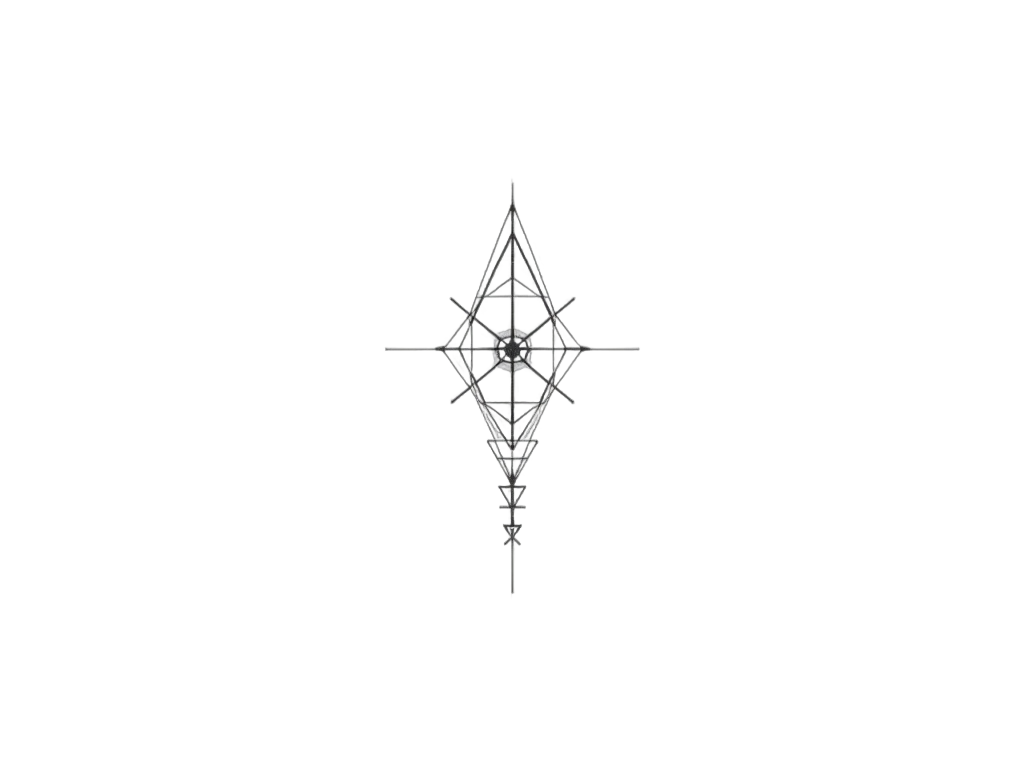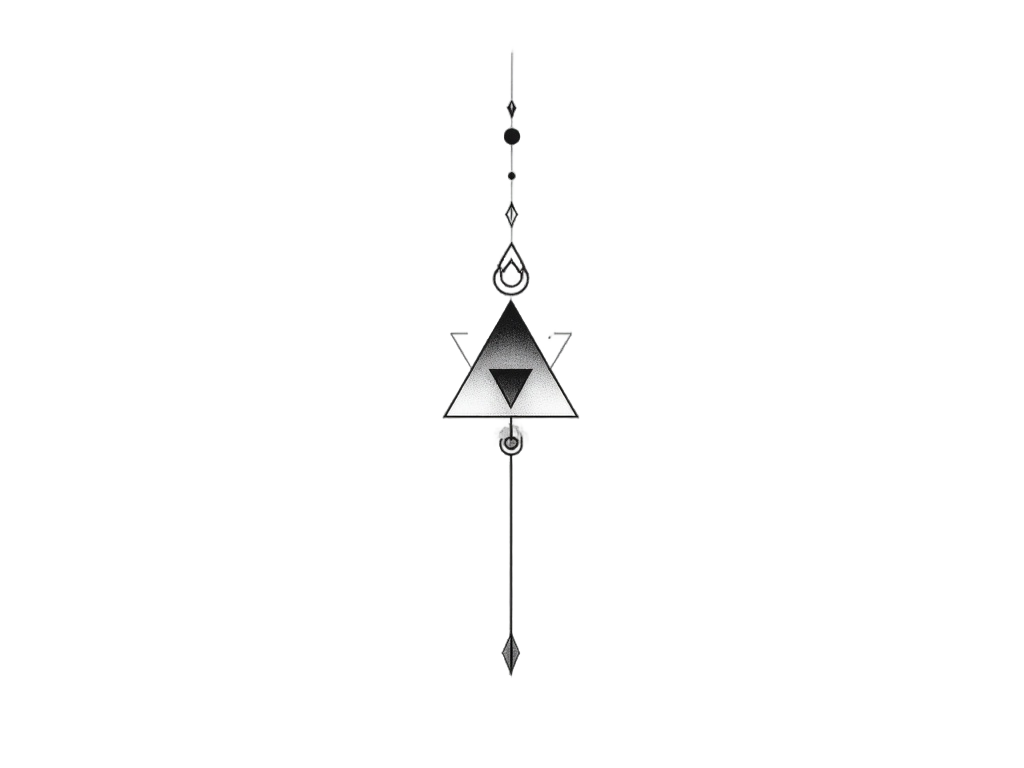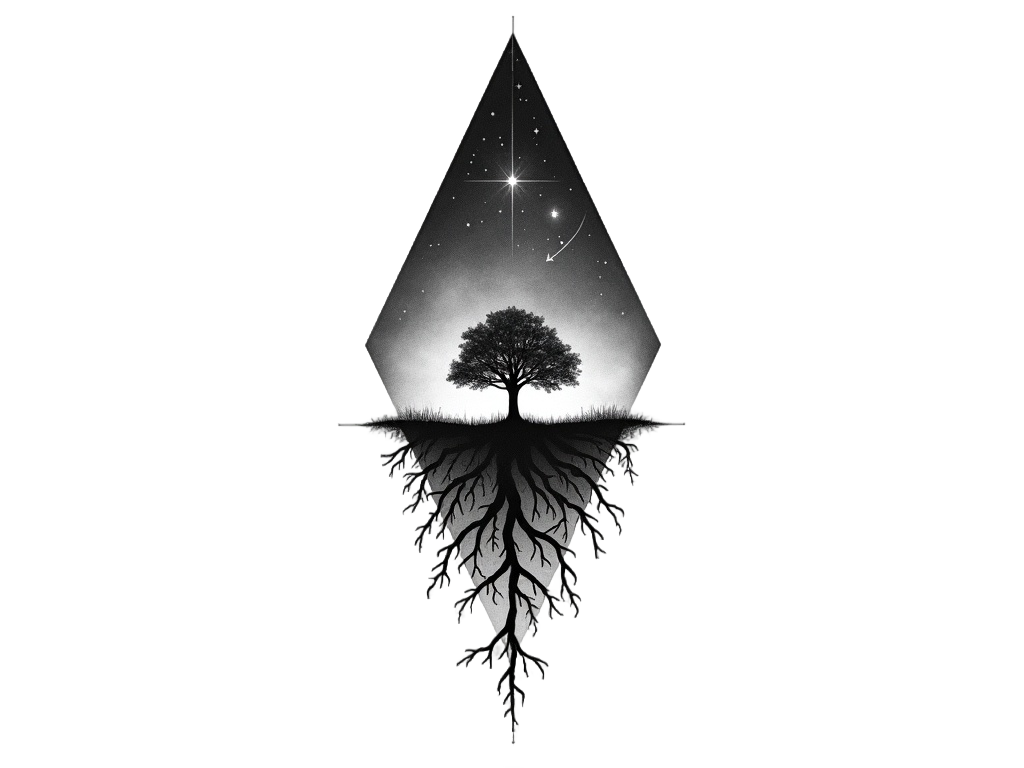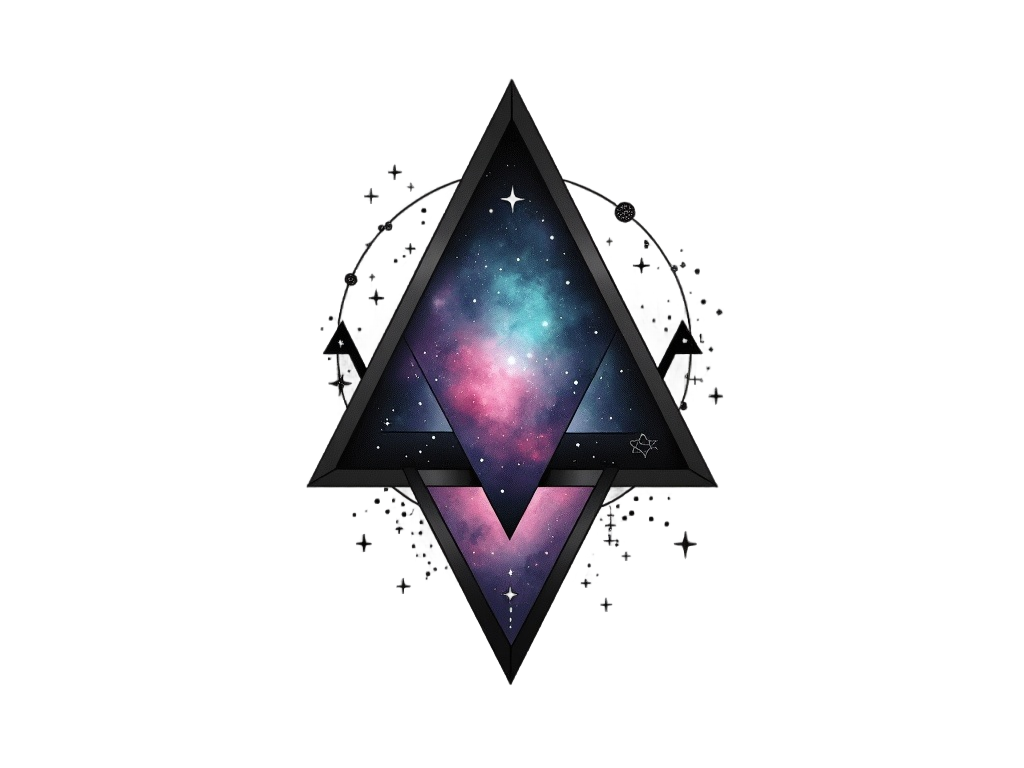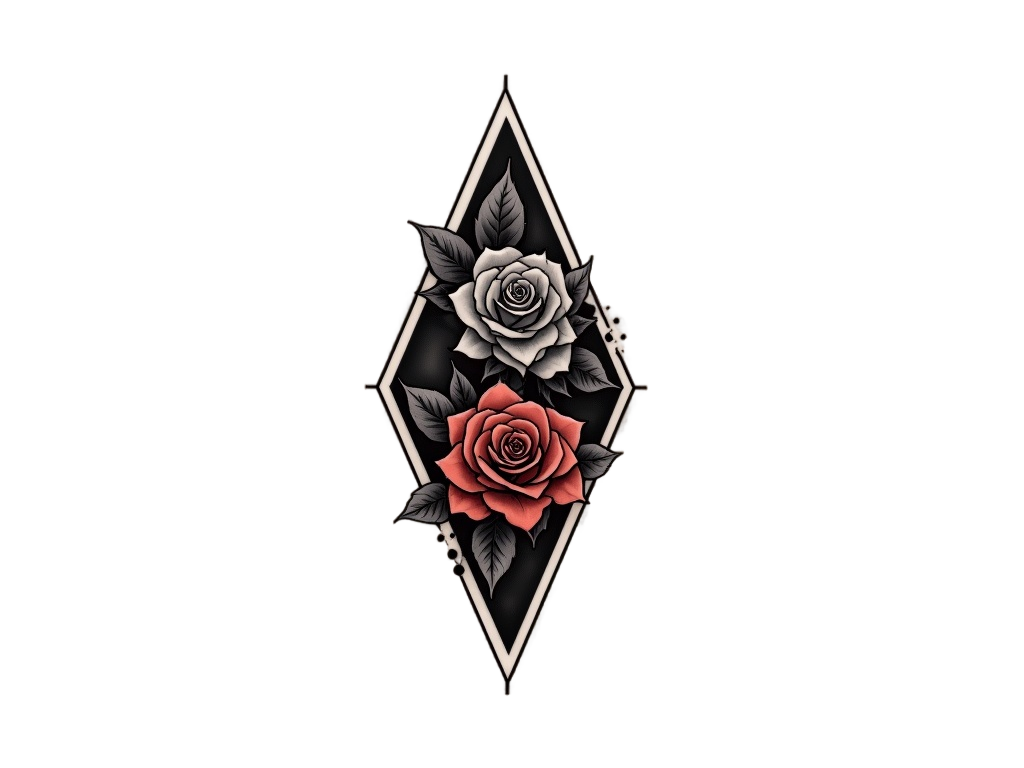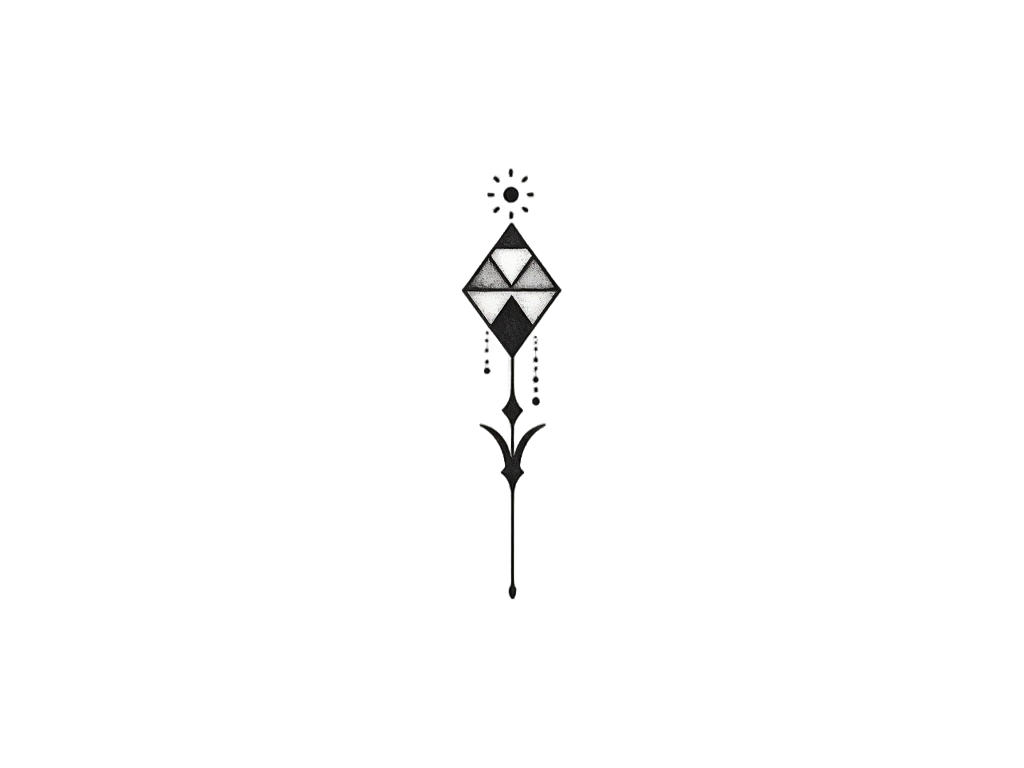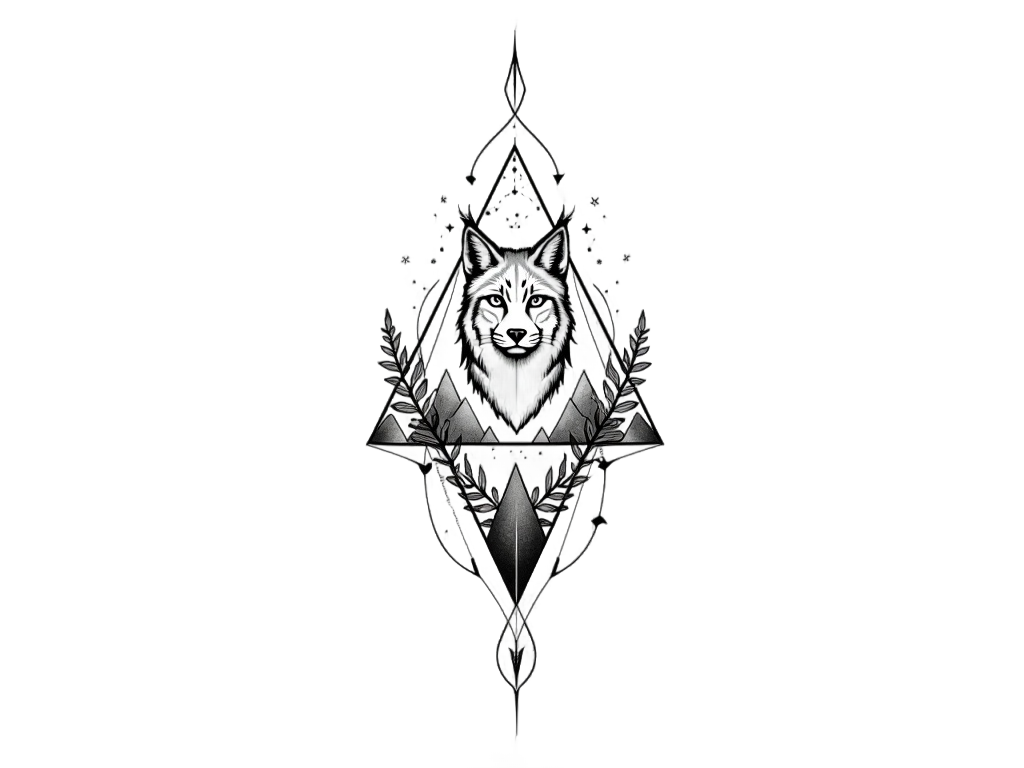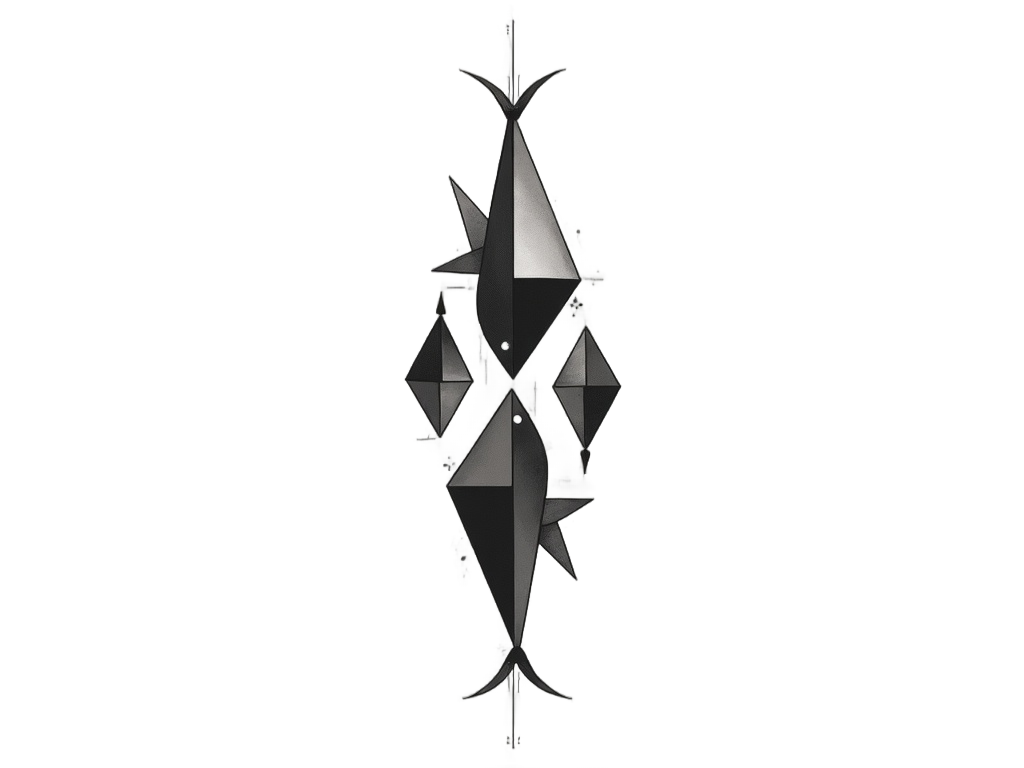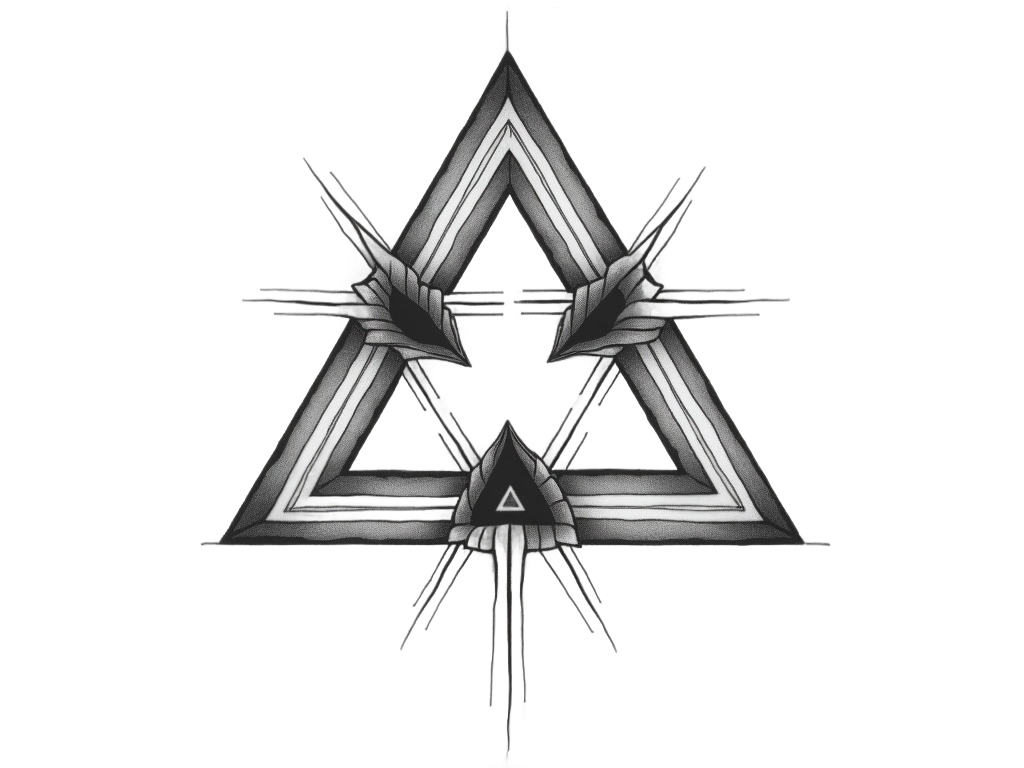Triangle Tattoo Ideas, Designs and Meaning
Meaning of Triangle Tattoos
- Triangle tattoos are often associated with the concept of balance and harmony, as they represent the connection between mind, body, and spirit.
- In many cultures, triangles symbolize strength and resilience due to their geometric stability.
- Historically, triangles have been used in religious and spiritual contexts, such as the Holy Trinity in Christianity, representing the Father, Son, and Holy Spirit.
- In alchemy, the triangle is a symbol of the elements, with an upward-pointing triangle representing fire and a downward-pointing triangle symbolizing water.
- The triangle can also signify change and transformation, as it is a shape that can be easily altered and adapted.
- In terms of gender, triangle tattoos are unisex and can be worn by anyone, often placed on the wrist, forearm, or back.
- Minimalist and geometric styles are popular choices for triangle tattoos, emphasizing clean lines and simplicity.
- In LGBTQ+ communities, the pink triangle is a symbol of pride and remembrance, originally used as a badge of shame during the Holocaust.
- The triangle's three sides can also represent past, present, and future, making it a meaningful choice for those reflecting on personal growth and life journey.
- In some Native American cultures, triangles are used in patterns and designs to convey stories and cultural heritage.
2,290 Tattoo Ideas
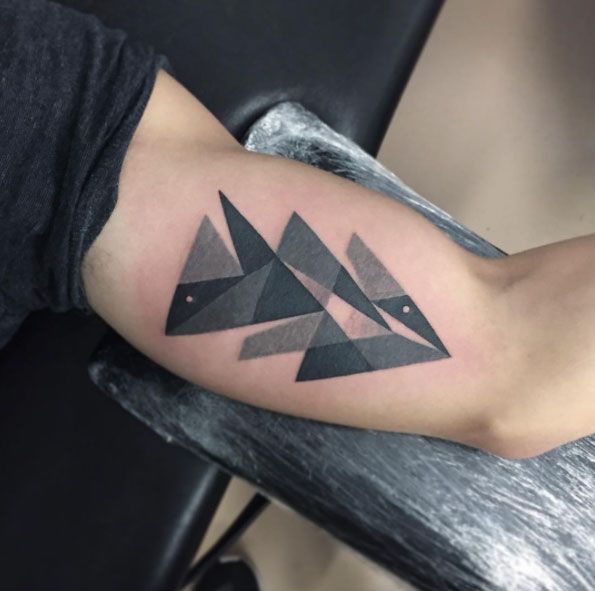

Blackwork triangles by Karl Marks
Selection from Pinterest
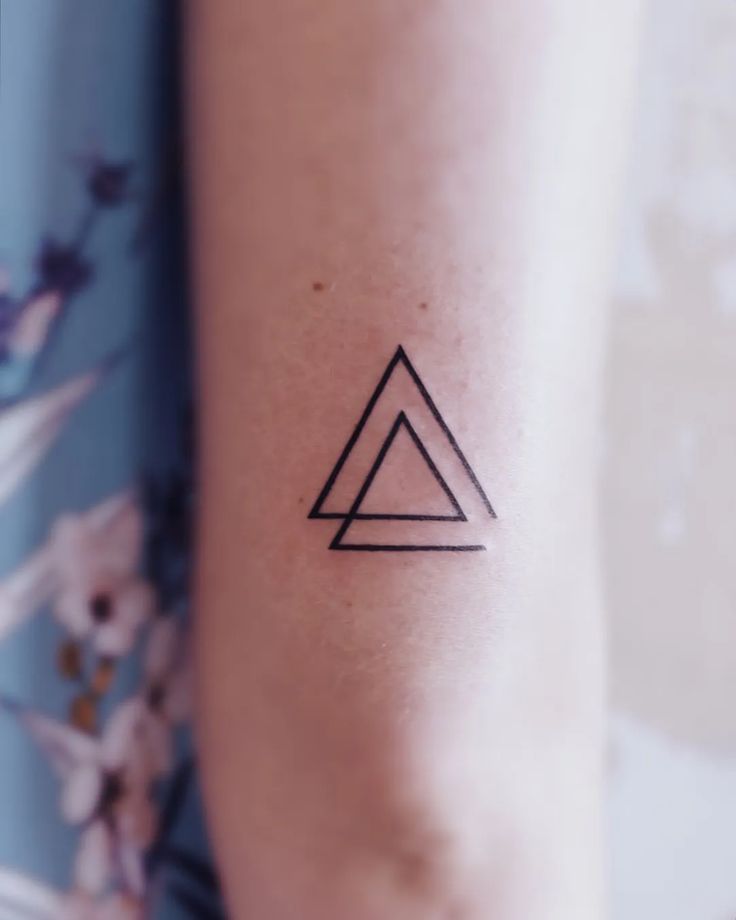

101 Double Triangle Tattoo Designs With Meaning
Selection from Pinterest
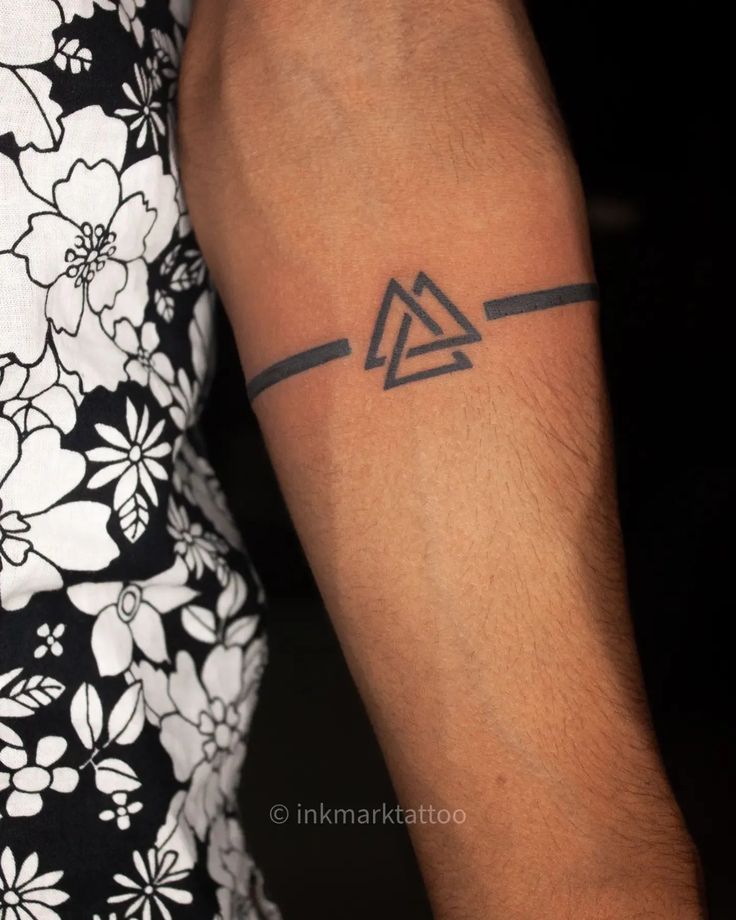

101 Double Triangle Tattoo Designs With Meaning
Selection from Pinterest
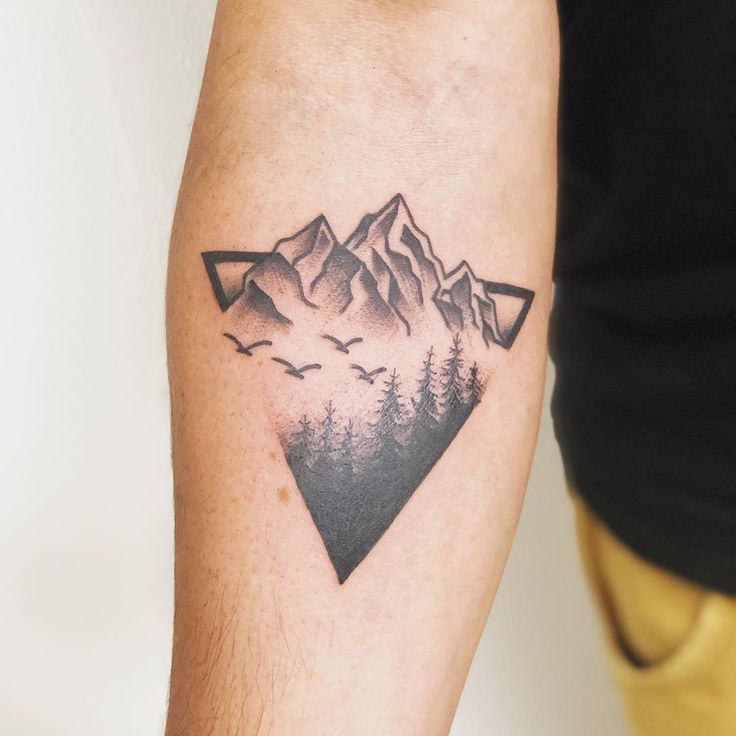

101 Amazing Triangle Tattoo Designs For 2024!
Selection from Pinterest
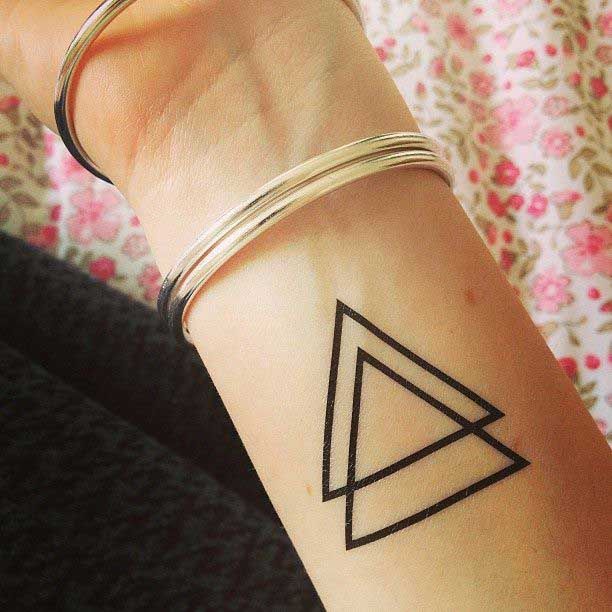

Triangle Tattoo Designs, Ideas and Meanings - All you need to know about Triangle Tattoos - Tattoo Me Now
Selection from Pinterest
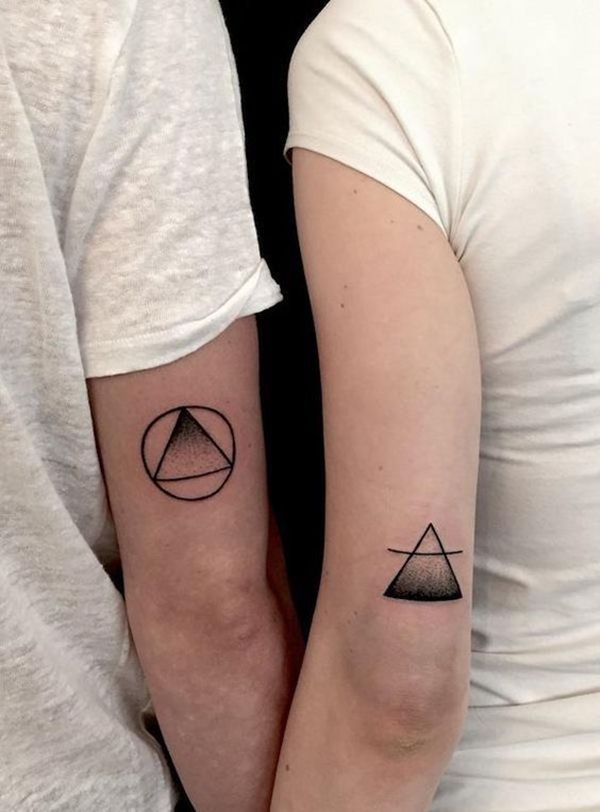

33 Triangle Couple Tattoo Designs For The Love of Geometry
Selection from Pinterest
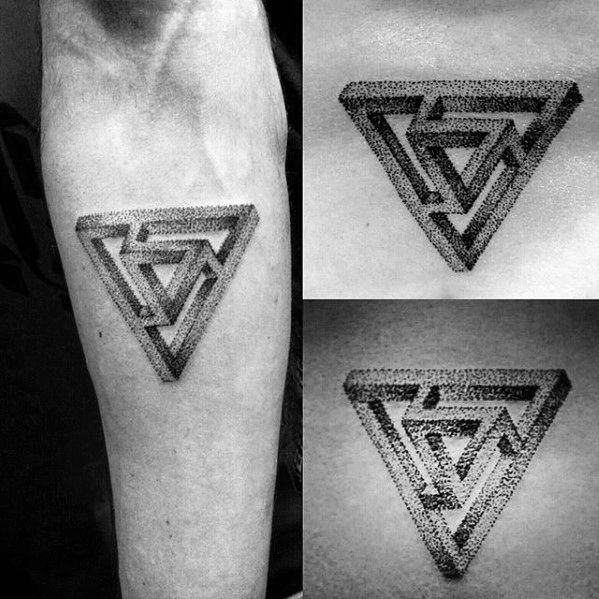

60 Cool Penrose Triangle Tattoo Designs for Men
Selection from Pinterest
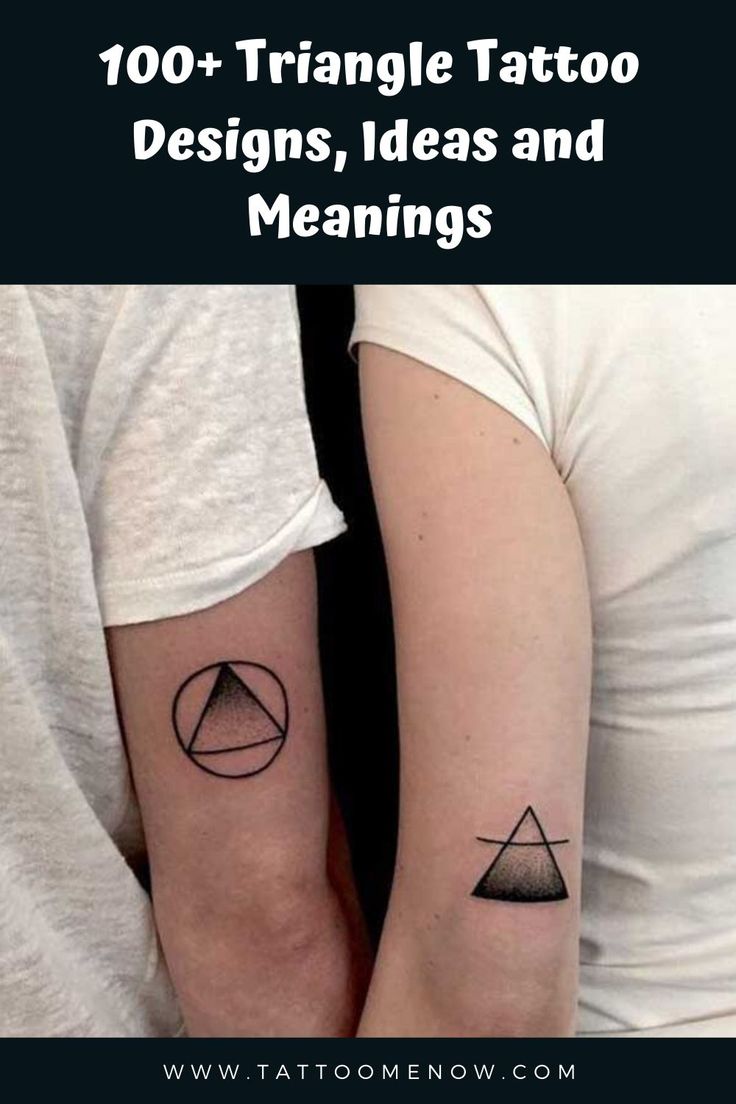

100 Triangle Tattoo Designs, Ideas and Meanings
Selection from Pinterest
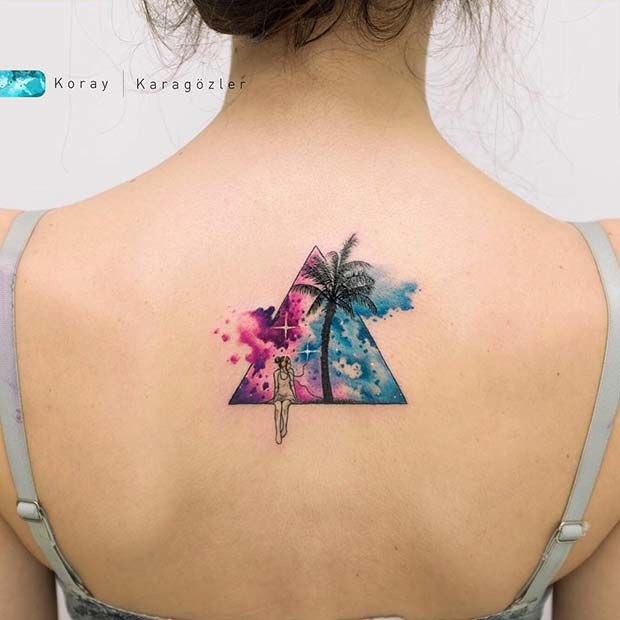

23 Triangle Tattoo Ideas You're Going to Be Obsessed With
Selection from Pinterest
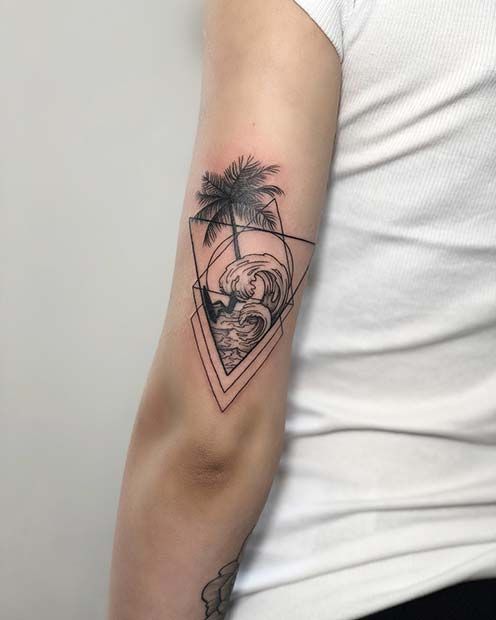

23 Triangle Tattoo Ideas You're Going to Be Obsessed With
Selection from Pinterest
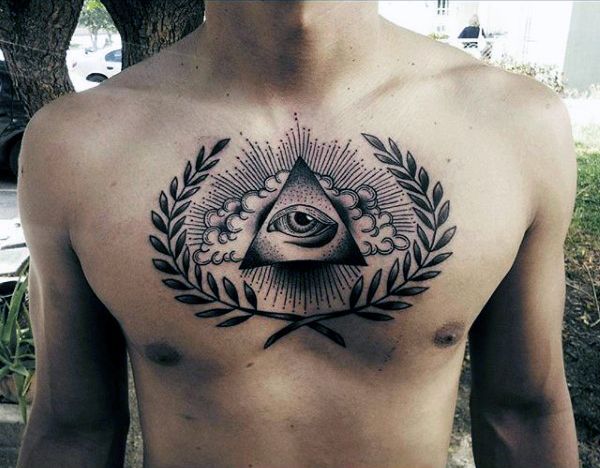

87 Terrific Triangle Tattoo Designs
Selection from Pinterest
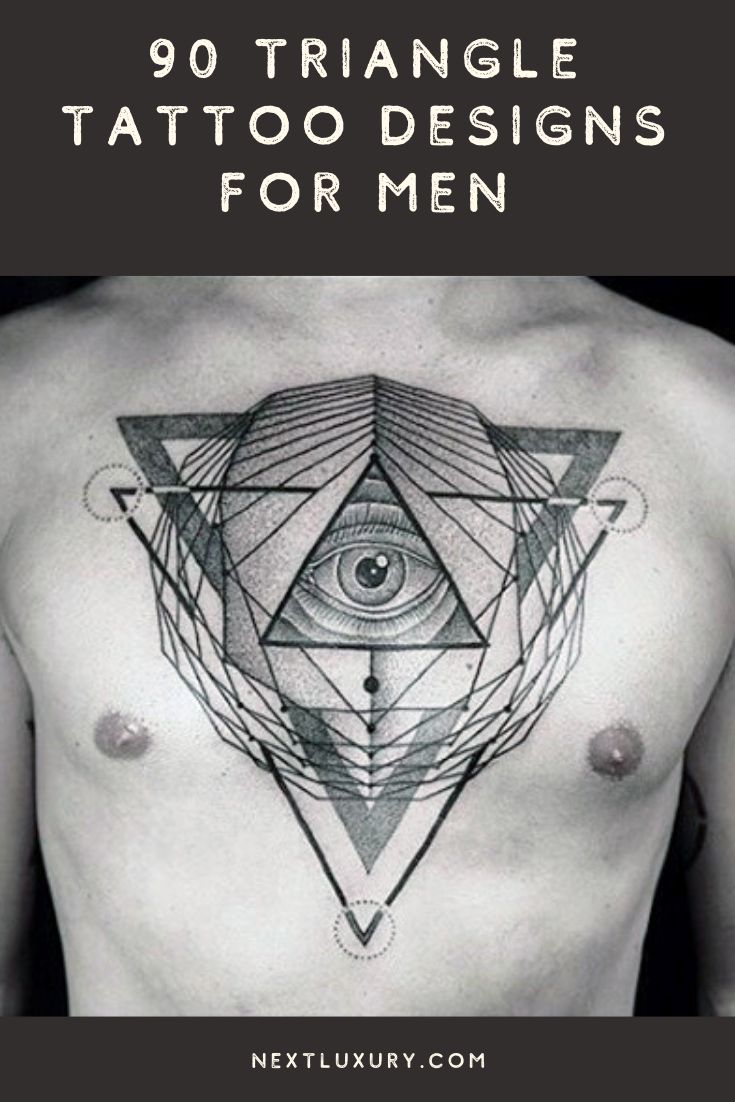

90 Triangle Tattoo Designs For Men - Manly Ink Ideas
Selection from Pinterest
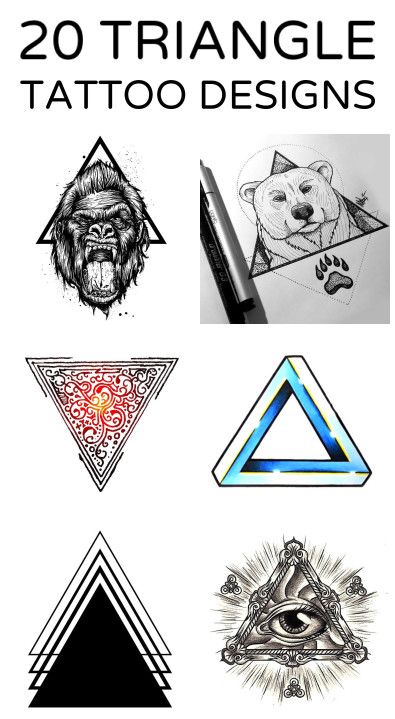

18 Triangle Tattoo Designs
Selection from Pinterest
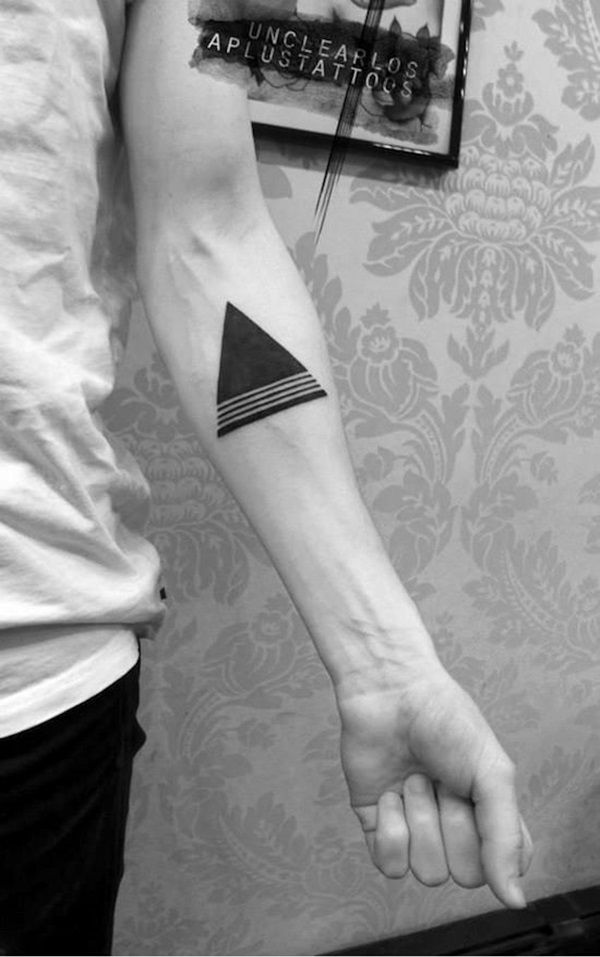

50 Pleasing Geometric Tattoos Designs and Ideas - Greenorc
Selection from Pinterest
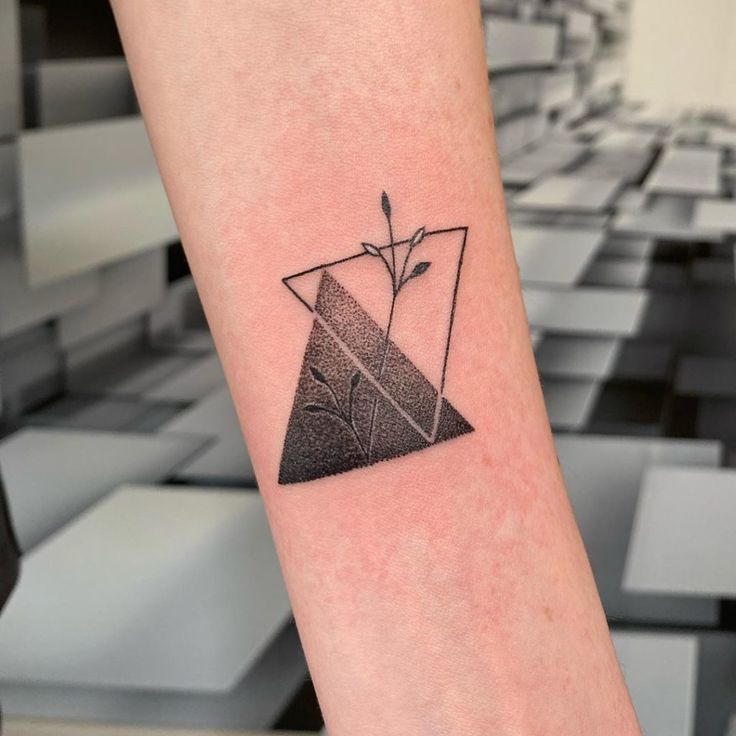

101 Amazing Triangle Tattoo Designs For 2024!
Selection from Pinterest
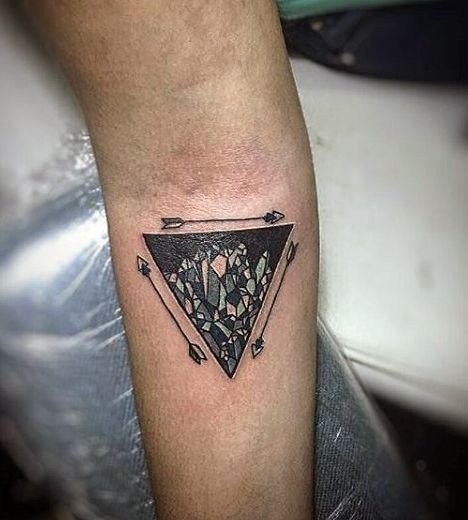

87 Terrific Triangle Tattoo Designs
Selection from Pinterest
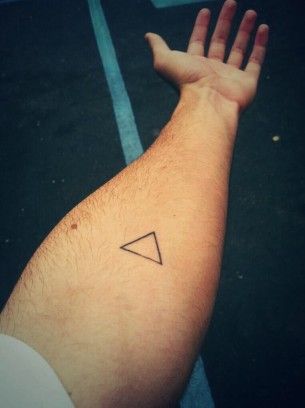

Triangle tattoo
Selection from Pinterest
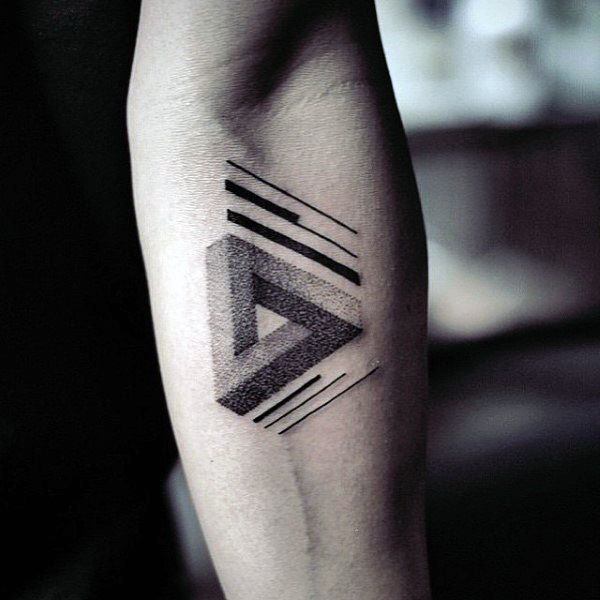

87 Terrific Triangle Tattoo Designs
Selection from Pinterest
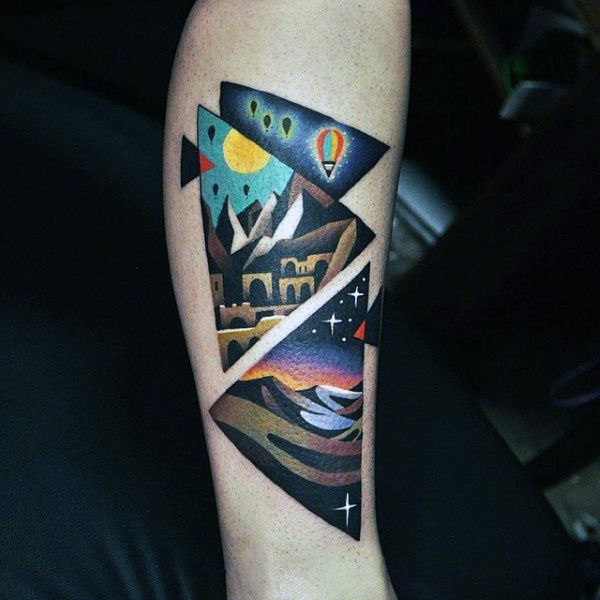

87 Terrific Triangle Tattoo Designs
Selection from Pinterest
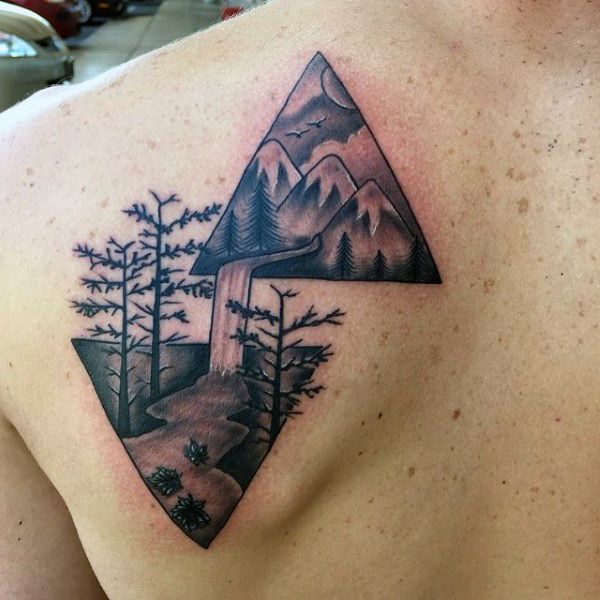

87 Terrific Triangle Tattoo Designs
Selection from Pinterest
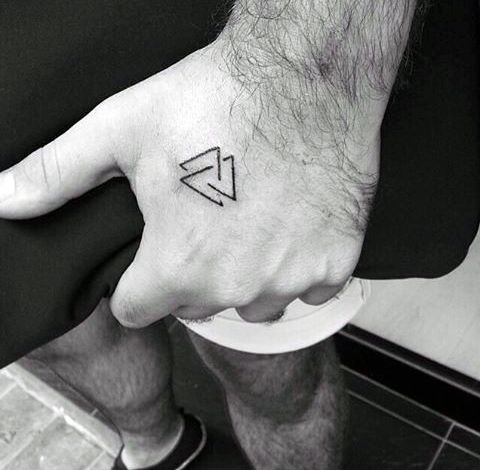

87 Terrific Triangle Tattoo Designs
Selection from Pinterest
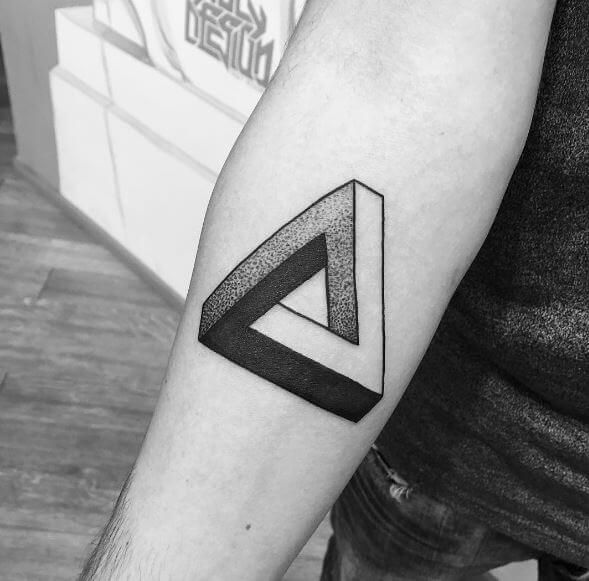

50+ Geometric Triangle Tattoos Designs With Meanings (2024)
Selection from Pinterest
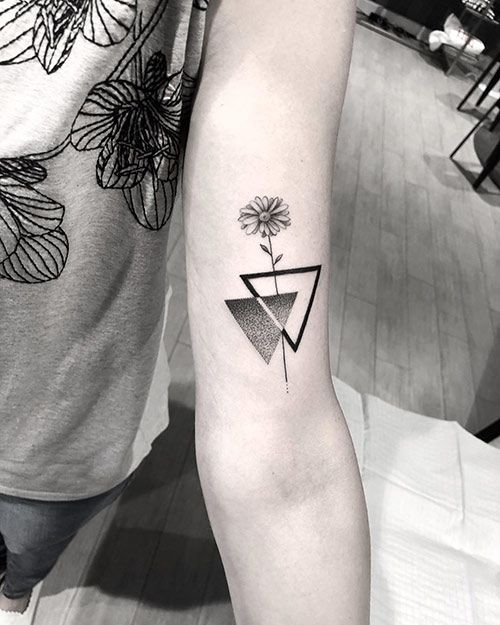

94 Tremendous Triangle Tattoo Ideas To Check Out
Selection from Pinterest
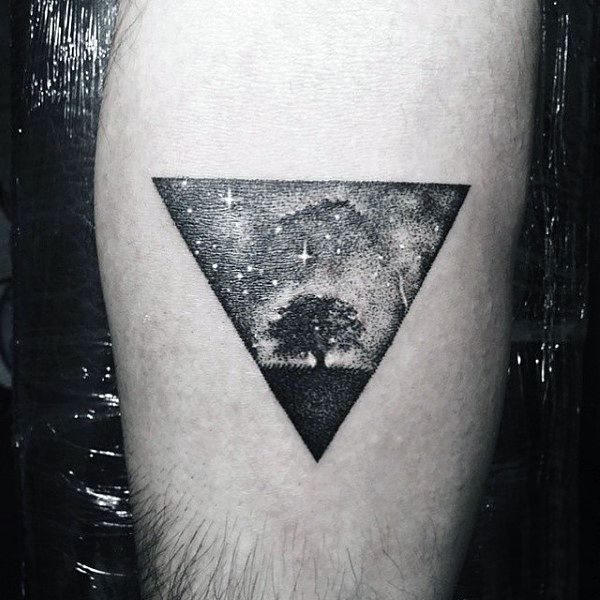

87 Terrific Triangle Tattoo Designs
Selection from Pinterest
One App to Store All Your Tattoo Ideas
Store your tattoo ideas in one place and Virtual Try-On them on your body!

Avoid Regrets with 3D Virtual Try-On!
Do a 3D Virtual Try-On to see how your tattoo design looks like on your body before you get it tattooed. Powered by Tatship's AI and 3D technology.



Cultural Considerations and Taboos for Triangle Tattoos
While triangle tattoos are generally well-accepted, there are some cultural sensitivities to be aware of. In some religious contexts, using the triangle to represent the Holy Trinity might be considered disrespectful if not done with the proper reverence. Additionally, the pink triangle has a significant historical context related to the persecution of LGBTQ+ individuals during the Holocaust, so it should be used with an understanding of its background and significance. It's important to approach these symbols with respect and awareness of their historical and cultural implications.
Popular Tattoo Styles and Variations for Triangle Tattoos
Triangle tattoos can be designed in a variety of styles, making them a popular choice for both minimalistic and intricate designs. Geometric styles are particularly popular, often incorporating other shapes and lines to create complex patterns. Dotwork and linework styles can add texture and depth to a simple triangle design. Watercolor styles can bring a vibrant and artistic flair to the tattoo, while tribal styles can incorporate cultural motifs and patterns. Some people choose to integrate the triangle into larger designs, such as mandalas or nature scenes, to add layers of meaning and visual interest.
Historical Origins and Evolution of Triangle Tattoos
The triangle has been a significant symbol throughout history, appearing in various cultures and contexts. In ancient Egypt, the triangle was associated with the pyramids, representing strength and stability. In Celtic culture, the triquetra, a three-pointed knot, is a symbol of eternity and interconnectedness. The triangle's historical significance is also evident in its use in architecture and art, where it is often employed for its aesthetic and structural properties. The triangle's enduring presence in human history underscores its universal appeal and symbolic power.
